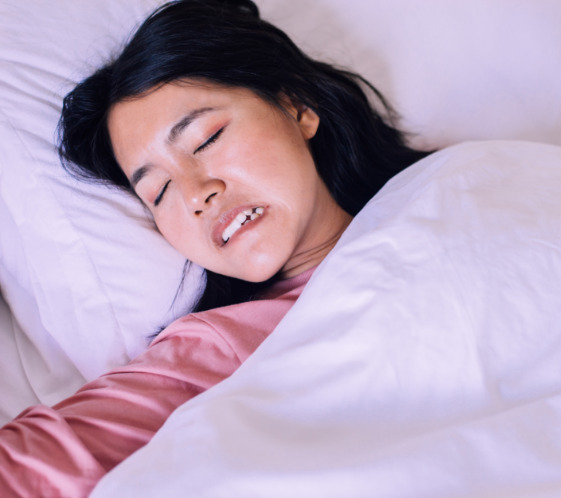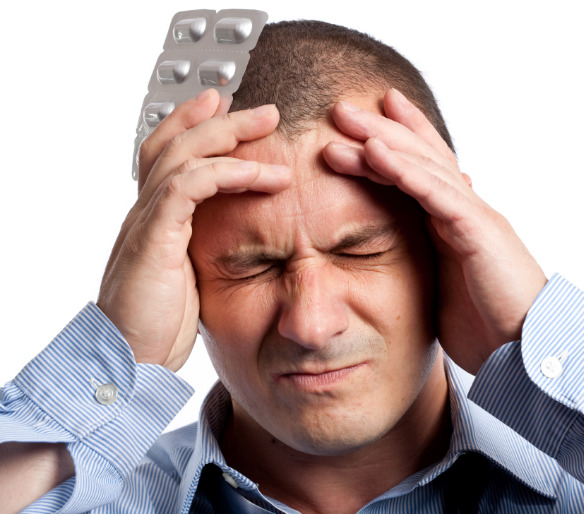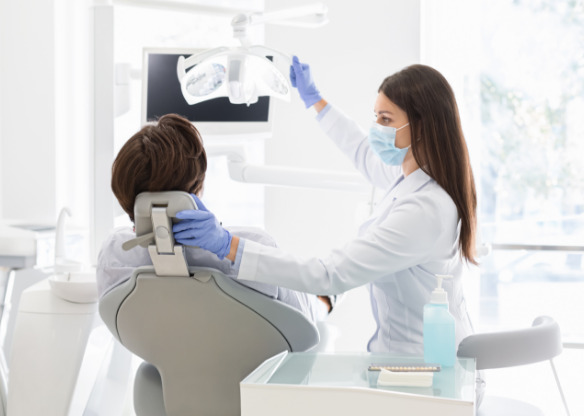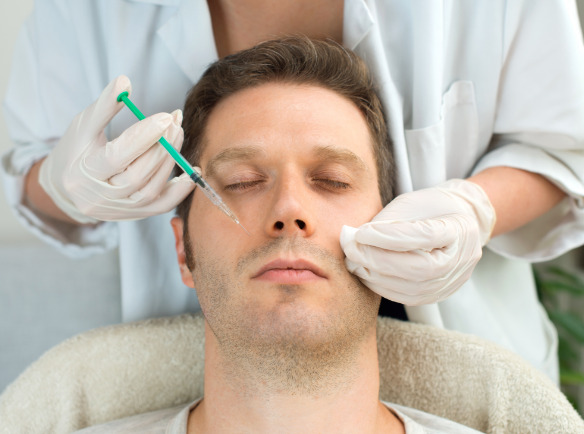
What is Teeth Grinding or Bruxism?
Tooth grinding, also known as bruxism, is a condition characterized by the involuntary clenching, gnashing, or grinding of teeth. It often occurs during sleep but can also happen during waking hours, sometimes unconsciously. Bruxism can affect both children and adults, and it can have various causes and consequences.
There are two main types of bruxism: sleep bruxism and awake bruxism. Sleep bruxism is more common and typically occurs during periods of deep sleep. Awake bruxism, on the other hand, happens when a person is awake and often involves clenching or grinding the teeth in response to stress or tension.
The causes of bruxism are not entirely understood, but several factors have been identified as potential contributors. Stress and anxiety are commonly associated with bruxism, as they can lead to increased muscle tension, including the jaw muscles. Other factors that can contribute to bruxism include an abnormal bite, misaligned teeth, sleep disorders such as sleep apnea, certain medications (e.g., antidepressants), excessive alcohol or caffeine consumption, and even smoking.
The Two Types of Bruxism
Defining What a Headache Is
A headache is a common condition characterized by pain or discomfort in the head or upper neck region. It is important to note that while a headache may cause discomfort, it is not necessarily an indication of a problem with your brain. In most cases, headaches are a result of various factors and are considered a symptom rather than a primary brain issue.
Headaches can be classified into different types, including tension headaches, migraines, cluster headaches, and sinus headaches, among others. Each type has its own distinct characteristics and potential causes.
Tension headaches are the most common type and typically present as a dull, aching pain on both sides of the head or at the temples. They are often associated with muscle tension or tightness in the neck, scalp, or jaw. Stress, poor posture, eye strain, and fatigue are common triggers for tension headaches.
Migraines, on the other hand, are intense, throbbing headaches that often occur on one side of the head. They can be accompanied by symptoms such as nausea, sensitivity to light and sound, and visual disturbances. Migraines are believed to involve complex interactions between the brain, blood vessels, and certain neurotransmitters.
Cluster headaches are less common but highly severe headaches that occur in cyclical patterns or clusters. They cause excruciating pain, usually around one eye, and are often accompanied by additional symptoms such as redness or watering of the eye, nasal congestion, or restlessness.
Sinus headaches are associated with inflammation or congestion in the sinuses, which can cause pain or pressure in the front of the face or forehead. They often occur alongside symptoms of a sinus infection, such as nasal congestion and discharge.

It is essential to understand that while a headache can be bothersome and affect daily activities, it is not necessarily an indication of a serious brain problem. However, in some cases, headaches can be a symptom of an underlying condition that requires medical attention, such as a concussion, brain tumor, or aneurysm. If you experience severe, sudden-onset headaches or if your headaches are accompanied by other concerning symptoms, it is advisable to consult a healthcare professional for proper evaluation and guidance.
Main Types of Headaches
Headaches are a prevalent affliction affecting individuals across various age groups, and a comprehensive understanding of their different types is crucial for accurate identification and effective management. From tension headaches, migraines, cluster headaches, to sinus headaches, each classification possesses unique characteristics and treatment modalities. By delving into the distinct attributes and underlying etiologies of these headaches, we aim to provide valuable insights for mitigating discomfort and enhancing overall well-being. Join us on this informative journey as we delve into the main types of headaches, equipping you with the knowledge necessary to navigate and address these common ailments.
The following are the main types of headaches:
Primary and Secondary
Headaches are commonly classified into two main categories: primary headaches and secondary headaches. This classification is based on the underlying cause or contributing factors that lead to the headache.
1. Primary Headaches: Primary headaches are not associated with any underlying medical condition or structural problem. They are the result of abnormal activity in the pain-sensitive structures of the head, but the exact mechanisms are not fully understood. The most common types of primary headaches include tension headaches, migraines, and cluster headaches. Primary headaches are typically recurring and can be triggered by various factors such as stress, certain foods, lack of sleep, or hormonal changes. They are considered the primary condition and not a symptom of an underlying health issue.
- Tension Headaches: Tension headaches are the most common type of primary headache. They usually present as a dull, aching pain that feels like a tight band around the head. They are often caused by muscle tension or stress.
- Migraines: Migraines are intense, throbbing headaches that can be accompanied by other symptoms such as nausea, sensitivity to light or sound, and visual disturbances. They are believed to involve a combination of genetic, environmental, and neurological factors.
- Cluster Headaches: Cluster headaches are relatively rare but highly severe headaches. They occur in cyclical patterns or clusters and cause intense, piercing pain, often focused around one eye. Cluster headaches are thought to involve abnormalities in the hypothalamus, a part of the brain.
2. Secondary Headaches: Secondary headaches are caused by an underlying medical condition or structural problem. They are symptoms of an underlying issue rather than a primary condition themselves. Various factors can lead to secondary headaches, including head injuries, infections, sinusitis, medication side effects, vascular disorders, brain tumors, or other systemic conditions. It is essential to identify and address the underlying cause of secondary headaches for effective treatment.
Differentiating between primary and secondary headaches is crucial because secondary headaches may require specific diagnostic tests and targeted treatment to address the underlying condition. If you experience new, persistent, or worsening headaches, or if they are accompanied by other concerning symptoms, it is important to consult a healthcare professional for proper evaluation and appropriate management.
Tension-Type Headaches
Tension-type headaches are the most common type of primary headache, affecting a significant portion of the population. These headaches are typically characterized by a mild to moderate, dull, and constant pain that feels like a tight band or pressure around the head.
Individuals with tension-type headaches often describe the sensation as aching or squeezing, rather than pulsating or throbbing like migraines. The pain can be present on both sides of the head or feel like a band wrapping around the forehead. Tension headaches do not usually worsen with physical activity and are not associated with nausea or vomiting.
Tension-type headaches can be episodic or chronic. Episodic tension headaches occur sporadically, lasting anywhere from a few minutes to several days. Chronic tension headaches, on the other hand, are more persistent, occurring for 15 or more days per month for at least three months.
Tension headaches can affect people of all ages and genders, although they tend to be more prevalent in adults. They are often associated with factors such as stress, anxiety, poor posture, muscle tension in the neck or scalp, fatigue, and emotional or mental strain. Individuals with a history of tension-type headaches in their family may also be more susceptible.
In most cases, tension-type headaches are not a cause for immediate medical concern. However, there are situations when seeking medical help is advisable:
1. Severe or sudden-onset headaches: If you experience a sudden and severe headache, especially if it is different from your usual tension-type headaches, it is important to seek medical attention promptly. It could indicate an underlying medical condition that requires evaluation.
2. Worsening or frequent headaches: If your tension headaches become more frequent, intense, or persistent, it is recommended to consult a healthcare professional. Changes in headache patterns should be evaluated to rule out underlying causes or determine if treatment adjustments are needed.
3. Headaches with concerning symptoms: If your tension headaches are accompanied by symptoms such as fever, stiff neck, confusion, vision changes, weakness, or numbness, it is crucial to seek immediate medical attention, as these could be signs of a more serious condition.
4. Impact on daily life: If your tension headaches significantly impact your ability to function, perform daily activities, or adversely affect your quality of life, it is important to consult a healthcare professional. They can assess your situation, provide appropriate treatment options, and help manage the impact of headaches on your well-being.

How Teeth Grinding Causes Tension Headaches
The connection between bruxism (teeth grinding) and tension headaches is multifaceted and can be attributed to the effects of excessive jaw muscle activity and increased muscle tension in the head and neck region.
When individuals engage in bruxism, whether during sleep (sleep bruxism) or while awake (awake bruxism), the grinding or clenching of teeth puts significant strain on the muscles involved in jaw movement. This prolonged muscle activity and tension can have repercussions that extend beyond the immediate oral and dental effects.
One of the primary consequences of bruxism-related muscle tension is the development of tension headaches. The excessive strain placed on the jaw muscles can lead to muscle tension and spasms not only in the jaw but also in the surrounding head and neck muscles. This muscle tension can radiate pain, resulting in the characteristic headache symptoms associated with tension headaches.
Furthermore, the muscle tension caused by bruxism can contribute to the development of myofascial trigger points. These are specific areas within the muscles that can become overly sensitive and tender. Trigger points in the head and neck muscles can refer pain to different areas, including the temples, forehead, and back of the head, leading to headache-like symptoms.
It’s important to note that not all individuals who grind their teeth will experience tension headaches, as there can be individual variations in susceptibility. However, for those who are prone to tension headaches, bruxism can be a contributing factor or exacerbating factor.
To address the connection between bruxism and tension headaches, a multidimensional approach is often necessary. Treating bruxism itself through the use of mouthguards or splints can help alleviate the strain on the jaw muscles, potentially reducing muscle tension and the occurrence of tension headaches. Additionally, stress management techniques, relaxation exercises, and addressing underlying factors such as anxiety or malocclusions (bite abnormalities) can be beneficial in managing both bruxism and tension headaches.
Bruxism Risk Factors
Bruxism, or teeth grinding, can be influenced by various risk factors that contribute to its occurrence. These risk factors can vary from person to person, and multiple factors may interact to increase the likelihood of developing bruxism. Some common risk factors associated with bruxism include:
2. Age: Bruxism can affect individuals of all ages, but it tends to be more prevalent in certain age groups. It is commonly observed in children and can persist into adulthood. However, bruxism can occur at any age.
3. Gender: Bruxism can affect both males and females. However, some studies suggest a slightly higher prevalence of bruxism in females. More research is needed to fully understand the gender-specific factors associated with bruxism.
4. Personality Traits: Certain personality traits may contribute to the development of bruxism. Individuals with competitive, aggressive, or perfectionistic tendencies may be at a higher risk of developing bruxism. Additionally, those who exhibit high levels of stress sensitivity or arousal may be more prone to teeth grinding.
5. Medications and Substances: The use of certain medications, such as certain antidepressants (e.g., selective serotonin reuptake inhibitors or SSRIs), can increase the risk of bruxism. Substance abuse, including excessive alcohol consumption or stimulant use, has also been associated with bruxism.
6. Sleep Disorders: Sleep-related disorders, such as sleep apnea or snoring, have been linked to an increased risk of bruxism. The disruptions in normal sleep patterns and respiratory function can contribute to teeth grinding during sleep.
7. Bite Abnormalities and Dental Factors: Malocclusions (bite abnormalities) or misaligned teeth can play a role in the development of bruxism. The irregular contact between teeth can lead to increased grinding or clenching.
8. Family History: There may be a genetic component to bruxism, as individuals with a family history of the condition may have a higher risk of developing it themselves.
It’s important to note that having one or more of these risk factors does not guarantee the development of bruxism. It simply indicates an increased likelihood.
Symptoms of Bruxism
1. Teeth Grinding or Clenching: The most evident symptom of bruxism is the grinding or clenching of teeth. This can occur during sleep (sleep bruxism) or while awake (awake bruxism). Often, individuals are unaware of this behavior as it may happen subconsciously.
2. Tooth Damage: Bruxism can lead to dental problems and damage over time. Excessive grinding can wear down tooth enamel, leading to tooth sensitivity, tooth fractures, chipping, or flattening of teeth.
3. Jaw Pain or Tenderness: Bruxism can cause jaw pain, facial discomfort, or tenderness. The excessive pressure exerted on the jaw joints (temporomandibular joints or TMJs) and surrounding muscles can result in soreness, stiffness, or aching sensation in the jaw area.
4. Headaches: Bruxism is often associated with tension headaches. The muscle tension and strain caused by grinding or clenching can radiate pain to the temples, forehead, or back of the head, resulting in headache-like symptoms.
5. Facial Pain: Bruxism-related muscle tension can extend beyond the jaw, causing pain in the face, cheeks, or even in the ears. The facial muscles may feel fatigued or sore due to prolonged muscle activity.
6. Earaches or Tinnitus: In some cases, bruxism can lead to ear-related symptoms. Earaches, a feeling of fullness in the ears, or tinnitus (ringing or buzzing sensation in the ears) can occur due to the close proximity of the TMJs and the ear structures.
7. Disrupted Sleep: Sleep bruxism may disrupt sleep patterns, leading to poor sleep quality or excessive daytime sleepiness. It can also disturb the sleep of a bed partner due to the grinding noises.
8. Facial muscle hypertrophy: In chronic cases of bruxism, the constant muscle activity can result in hypertrophy or enlargement of the jaw muscles, making them more prominent.
It’s important to note that these symptoms can be attributed to other conditions as well, and a professional evaluation is necessary for an accurate diagnosis.
Bruxism Headache Relief and Treatment
The pain caused by teeth grinding can be treated and alleviated. By addressing the underlying cause of the bruxism, such as stress or tooth misalignment, headaches can be effectively managed with the help of treatment options like bite splints, relaxation techniques, and dental interventions. The most effective therapies are as follows:
Regular Visits to Dentists
A dentist trained in treating bruxism and associated headache disorders will undertake a thorough examination during regular visits and guide the patient through a customized treatment plan. Here’s an outline of what a patient can expect:
1. Patient History and Symptoms: The dentist will begin by discussing the patient’s medical and dental history, lifestyle factors, and any symptoms they’ve been experiencing. This discussion could include sleep patterns, daytime tiredness, facial pain, or morning headaches.
2. Physical Examination: The dentist will perform a comprehensive examination of the patient’s mouth, jaw, face, and neck. This examination includes checking the teeth for signs of wear or damage caused by grinding, examining the jaw for signs of misalignment or discomfort, and assessing the facial muscles for tension or tenderness.

Remember, effective treatment of bruxism and related headaches is a team effort involving the patient, dentist, and sometimes other medical professionals, and regular check-ups play a critical role in this process.
Night Guards, Splints, NTI or OTC
The choice of dental appliance for managing bruxism and associated headaches is crucial, with several options available. The differences lie in their design, material, customization, effectiveness, and cost.
In conclusion, while over-the-counter options can offer a quick, short-term solution, custom-made appliances like night guards, occlusal splints, and the NTI-TSS device generally provide better protection and symptom relief for bruxism and associated headaches. A healthcare provider or dentist can provide guidance on the most suitable option based on the patient’s specific needs and circumstances.
Therapy and Relaxation Techniques
Stress is a primary trigger for both bruxism and tension-type headaches. As such, effective stress management and reduction techniques are crucial components of an overall treatment plan. This is where relaxation techniques and Cognitive Behavioral Therapy (CBT) come into play.
Relaxation Techniques: These methods aim to reduce muscle tension and promote a state of calm, which can alleviate both bruxism and the resulting headaches. Examples include:
1. Progressive Muscle Relaxation (PMR): This involves sequentially tensing and then relaxing different muscle groups throughout the body. It can be particularly useful for individuals who grind their teeth due to muscle tension.
2. Deep Breathing Exercises: These techniques encourage slow, deep breaths, which can help reduce tension and promote relaxation. This may lessen the urge to clench or grind the teeth.
3. Mindfulness and Meditation: By fostering a greater awareness of the present moment and promoting a state of relaxation, mindfulness and meditation can help individuals better manage stress, potentially reducing bruxism and associated headaches.
Cognitive Behavioral Therapy (CBT): This is a type of psychological treatment that has been proven to be highly effective in managing stress, anxiety, and sleep disorders.
In the context of bruxism and tension headaches, CBT works by:
1. Cognitive Restructuring: This involves identifying and challenging stress-inducing thought patterns and replacing them with more positive and realistic thoughts.
2. Behavioral Activation: This strategy encourages individuals to engage in activities they enjoy or find relaxing, to reduce stress and promote better sleep.
3. Sleep Hygiene Training: This involves learning about healthy sleep habits and creating an environment conducive to good sleep, which is essential for reducing bruxism.
4. Stress Management Techniques: This includes learning various strategies for managing stress, such as time management, problem-solving, and relaxation techniques.

CBT typically involves working with a psychologist or therapist over several sessions. The skills and strategies learned can provide long-term benefits, not only for bruxism and tension headaches but for overall mental health and well-being.
In summary, relaxation techniques and CBT provide powerful tools for managing the stress that can trigger bruxism and tension headaches. By reducing stress and promoting relaxation, these approaches can play a significant role in alleviating these conditions.
Botox for Bruxism and Associated Headache Relief
Botulinum toxin, commonly known as Botox, has gained popularity in the management of various medical conditions, including bruxism and associated headaches. This therapy involves injecting small amounts of Botox into the masseter muscles, one of the primary muscles used in the grinding and clenching associated with bruxism.
Mechanism of Action: Botox works by blocking the nerve signals to the muscle in which it is injected, causing a temporary muscle relaxation. This reduces the force of muscle contraction, thereby diminishing the intensity of the clenching and grinding habit. It’s important to note that the injection doesn’t eliminate the behavior; instead, it reduces the negative effects on the teeth and the jaw joint.
Effects on Muscles of Mastication: Besides the masseter muscles, Botox can also be injected into other muscles of mastication like the temporalis and pterygoid muscles, depending on the patient’s needs. By reducing the excessive muscular force associated with bruxism, Botox can alleviate the stress and strain on the jaw joints, relieving the symptoms of temporomandibular joint disorders (TMJD), a common co-condition with bruxism.
Treatment of Headaches: The use of Botox is not just confined to treating bruxism and TMJD. It is also approved by the U.S. Food and Drug Administration for the treatment of chronic migraines, defined as having a headache on 15 or more days per month. Botox injections can help reduce the frequency of migraines and potentially alleviate tension-type headaches connected to muscle tension.
Success Rates and Prevalence: Several studies indicate that Botox injections can be effective in reducing the symptoms of bruxism and associated headaches, with some patients reporting significant relief within a week of treatment. However, the effectiveness varies from person to person, and the relief is temporary, typically lasting for about three to six months. Therefore, repeated treatments are often necessary. It’s also important to consider potential side effects, including pain or discomfort at the injection site and, in rare cases, difficulty chewing.
Botox is becoming more widely accepted as a treatment for bruxism and related headaches due to its efficacy and minimal invasive nature. However, the prevalence of Botox use for bruxism is difficult to estimate due to varying degrees of diagnosis and treatment approaches across different regions and healthcare systems.
It’s crucial for patients considering Botox treatment to consult with a healthcare provider experienced in administering Botox for bruxism and related headaches, to understand the potential benefits and risks. As always, Botox is one option among many and should be considered as part of a comprehensive treatment plan.
Developing a Relationship with an Orofacial Pain Specialist: A Key to Managing Bruxism and Associated Headaches
Bruxism, a condition characterized by involuntary grinding and clenching of teeth, often leads to a range of problems like tooth damage, jaw pain, and various types of headaches. Fortunately, several treatment strategies exist, including the use of custom-made dental appliances, relaxation techniques, cognitive behavioral therapy, and even Botox injections. Each of these methods has its merits and challenges, and their effectiveness can vary greatly from one individual to another.
Given the complexities involved, developing a relationship with a specialist who can guide your treatment is crucial. In this context, the role of an Orofacial Pain (OFP) specialist is paramount. OFP is a specialty of dentistry, officially established in 2020, that focuses on the diagnosis, management, and treatment of pain disorders of the jaw, mouth, face, head, and neck.
An OFP specialist is well-equipped with the knowledge and skills necessary to provide comprehensive care for individuals suffering from bruxism and associated headaches. They can recommend the most appropriate treatment, tailor-made to meet your unique needs and circumstances. This could range from fitting you with a customized dental appliance, to guiding you through relaxation exercises, to administering Botox injections.
Importantly, an OFP specialist can provide ongoing care and monitor your progress over time, making necessary adjustments to your treatment plan. This ensures that you receive the most effective treatment not just in the short term, but also in managing your symptoms over the long haul.
In summary, if you’re suffering from bruxism and related headaches, consider establishing a relationship with a dentist trained in managing Orofacial Pain. This could be an invaluable step towards managing your symptoms, improving your quality of life, and gaining control over your health.

